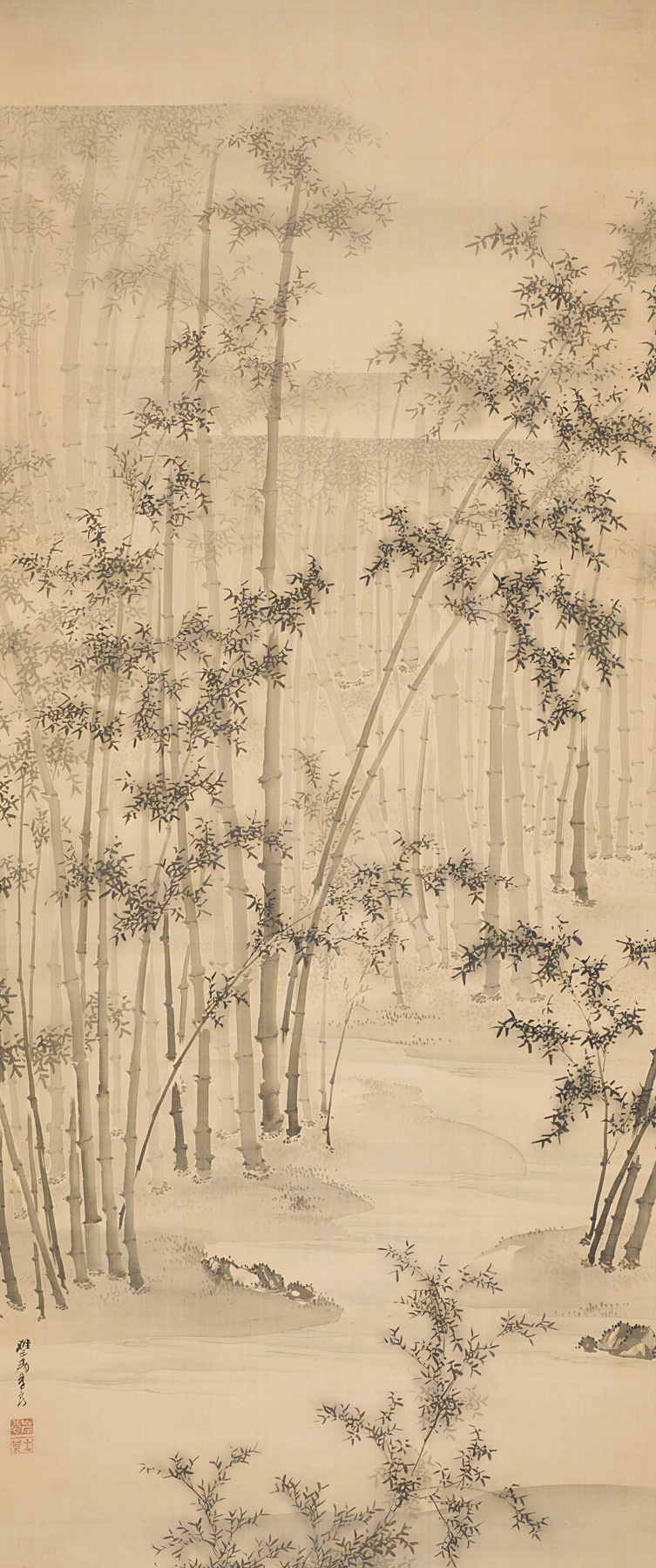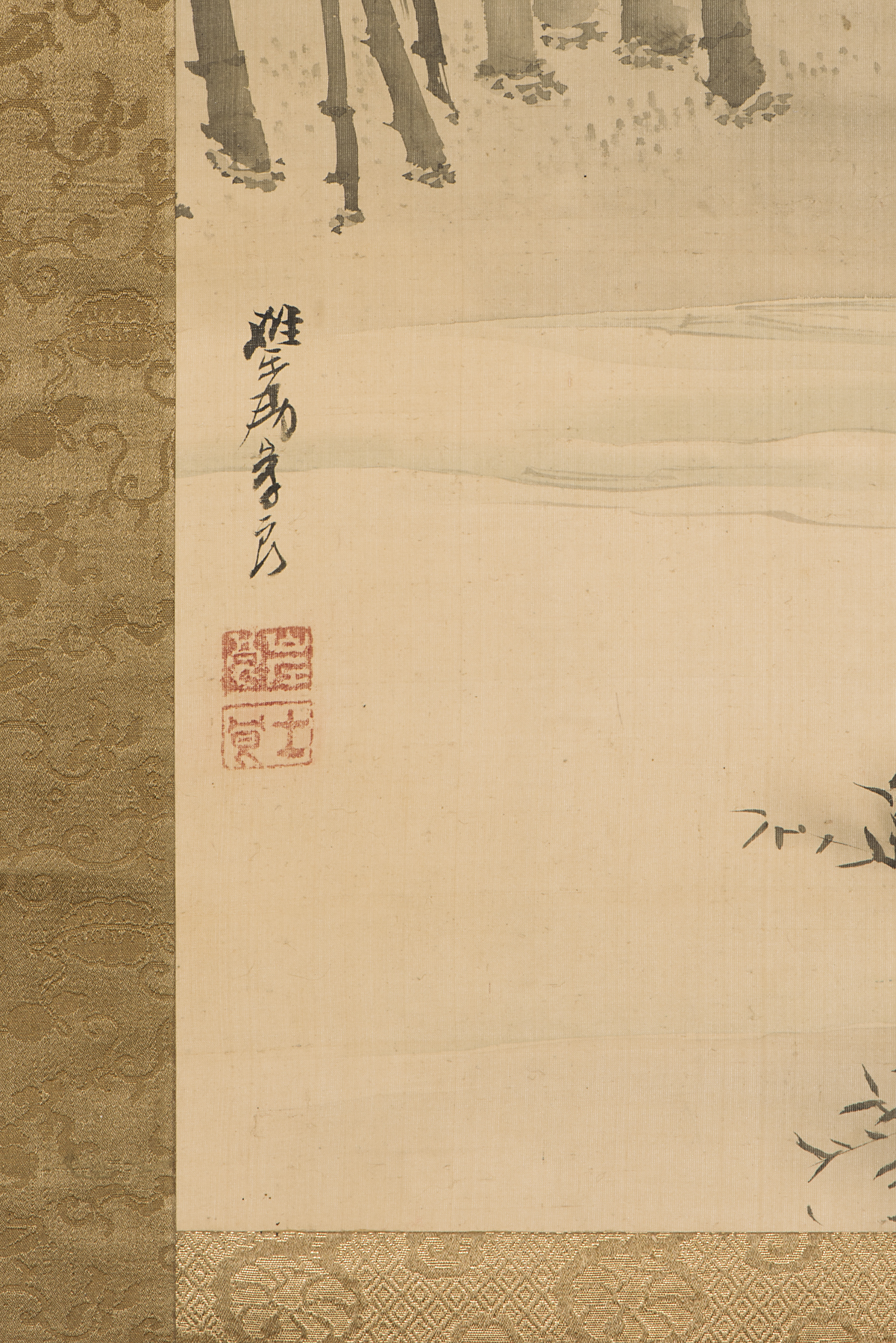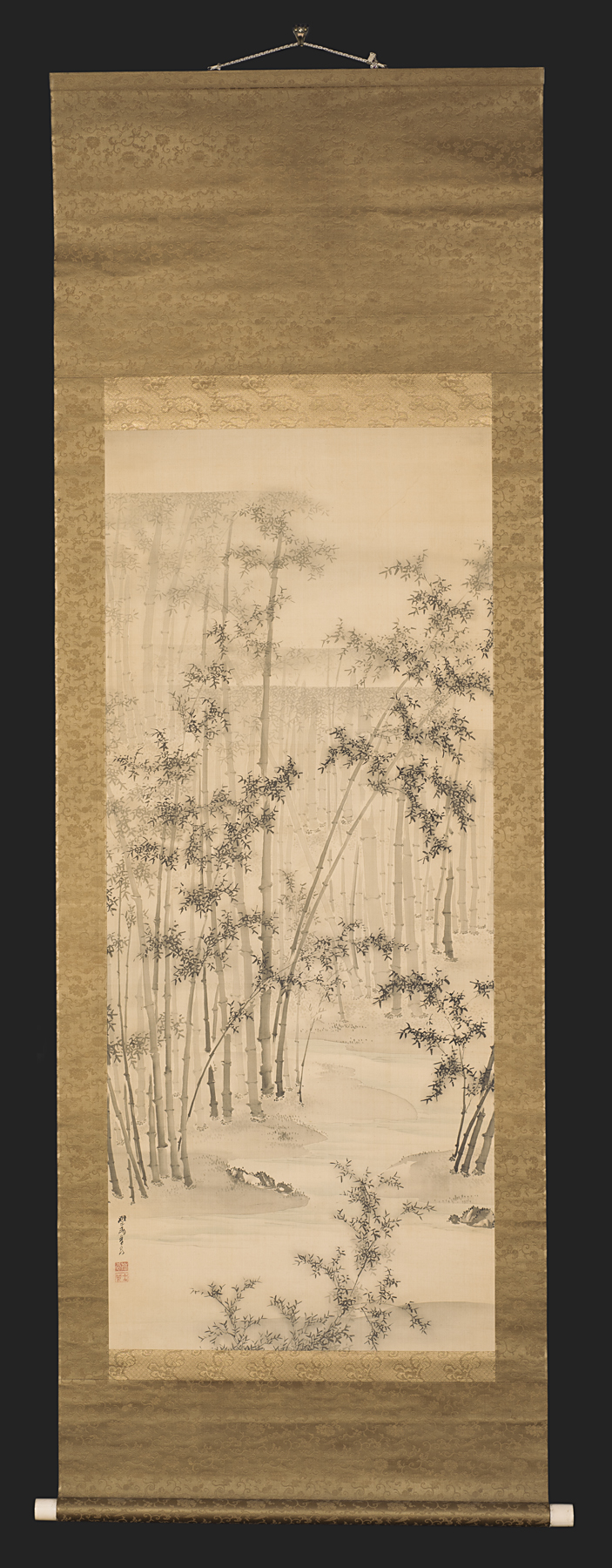Bamboo Grove, Ganryō
Artwork Overview
Ganryō, artist
1798–1852
Bamboo Grove,
1800s, Edo period (1600–1868) or Meiji period (1868–1912)
Where object was made: Japan
Material/technique: silk; color; ink
Dimensions:
Image Dimensions Height/Width (Height x Width): 1270 x 533.4 mm
Image Dimensions Height/Width (Height x Width): 50 x 21 in
Image Dimensions Height/Width (Height x Width): 1270 x 533.4 mm
Image Dimensions Height/Width (Height x Width): 50 x 21 in
Credit line: Museum purchase
Accession number: 1970.0083
Not on display
If you wish to reproduce this image, please submit an image request




